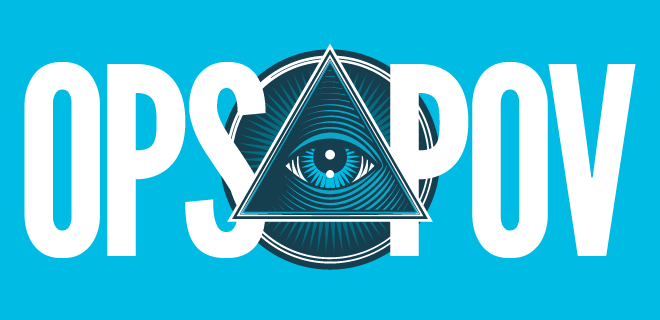
There’s been an inordinate amount of journalistic reporting detailing the instability of the advertising market brought about by the impact of COVID-19.
Anyone reading the state of affairs would wholeheartedly believe that the Coronavirus completely obliterated ad spend. If you’re one of those folks, I’mma let you finish but, we’re starting to see some data analysis come in from the past few months and I gotta tell ya there are definitely some bright spots.
First, in response to consumer’s stay-at-home behaviors, we saw a hike in gaming TV spend, along with esports. More recently, we learned that as consumers continued to shop for clothing, that category has topped paid ad impressions. Coincidentally, digital ad spend is set to eclipse traditional for the very first time and we have programmatic to thank for that advancement.
We even discovered that brands were heavily investing in mission-based marketing, because it builds trust.
The latest deviation from the advertiser pause on ad spend that we’re hearing about is in the financial services category. For the last couple of years, the category has lead in digital ad spend and during the pandemic, even when loads of people are out of work, it seems to be no different.
As you can guess, I was a little skeptical. To gain a better understanding, I spoke with Rachel Tuffney, EVP, US Operations for Dianomi, an advertising platform for financial services, to learn about the current trends within financial ad spending and how premium publishers could take advantage of this shift, as well as the future of advertising.
Lynne d Johnson: It seems that while ad spend is down across the board, digital is doing a lot better than traditional. But it only appears that a few categories are actually spending. There’s gaming because, well, that’s what quite a few people are doing with all of their time now.
And then there’s clothing because people are still buying—probably for their Zoom meetings and they’re catching fitness fever. But when I heard that financial brands were spending I was a little baffled. With tens of millions of people laid off, are they really digging deeper into financial products? What’s going on here?
 Rachel Tuffney: It is interesting to think that financial brands would be increasing spend during these unprecedented times, but we are seeing spend on our platform increase. In Dianomi’s marketplace, which encompasses 600 blue-chip financial brands, such as BlackRock, Vanguard, and Charles Schwab, we’ve seen ad spend increase during the height of the pandemic in the U.S.
Rachel Tuffney: It is interesting to think that financial brands would be increasing spend during these unprecedented times, but we are seeing spend on our platform increase. In Dianomi’s marketplace, which encompasses 600 blue-chip financial brands, such as BlackRock, Vanguard, and Charles Schwab, we’ve seen ad spend increase during the height of the pandemic in the U.S.
In conversations with our clients, we’re hearing that there is an increase in personal investors engaging with the stock market, as they either have more time on their hands or perhaps need to create an income during a period of less work or furloughs. Our clients are focusing on engaging their professional and personal client bases to ensure they are present and proactive in providing help with important choices in uncertain climates. For financial brands, this is an opportunity to lean in, educate and be a resource on complex and often high stakes financial topics.
The reason we’re seeing the spend increase on our platform in particular is because we’re able to align their ads natively with premium content environments right next to the very content the consumers are seeking out. So that means the ads get placed right into the correct environment and that leads to great engagement. For example, a fund manager reading an article about a new ETF investment vehicle will be likely to be receptive to a financial brand’s white paper on that subject.
LdJ: So this sounds more like a B2B play than a B2C play. What kind of numbers are we talking about? Are you seeing growth from last year or are your numbers relatively the same?
RT: When comparing April 2019 to April 2020, we saw ad spend increase by more than 70% in our marketplace. We’ve also seen our advertiser network grow by nearly 20% this year, signifying that financial and professional service brands are looking to invest more in advertising, especially native and contextually relevant advertising. I also think that our platform is breaking through the clutter due to the unique and premium nature of the publisher partnerships.
LdJ: How can premium publishers take advantage of this trend?
RT: It’s a tough climate for media brands and publishers, even the premium publishers are struggling with their cost-base. So revenue is important and connecting your supply with quality platforms like Dianomi has been a great way to develop new revenue streams with premium brands.
In the past, a lot of publishers partnered with native platforms who drove revenue but delivered questionable ad quality. This is not a fair pay off and so we’ve seen a lot of the big publishers lean into our philosophy of quality and aligned content and brands. The winning formula is to prioritize premium brands and ads that not only enhance the financials (for the business) but also the experience for their readers.
In simple terms, if you’re looking to better understand ETFs, you’re not looking for cat food.
LdJ: Contextual targeting is gaining an attention revival as government and big tech have become staunch consumer privacy advocates. For instance, the enforcement date for CCPA just passed and Chrome is sunsetting the third-party tracking cookie soon. Let’s not forget that usage of the third party-tracking cookie led to a lot of fraud, which brings me to another issue.
In the era of COVID-19 and with growing concerns about racial injustice, we’re seeing blocklist approaches to brand safety hurting both publishers and advertisers. Legit pubs are missing out on revenue opportunities and brands aren’t reaching all of the audience segments they need to reach. How does contextual targeting benefit both advertisers and publishers when it comes to privacy and brand safety?
RT: First of all, let me say that this is a great question. Raising awareness of what blocklists (and term blocks) can do to important causes and journalism is important. At a macro level, there is a lot of focus on supply market places specifically designed to help brands support journalism and BLM type content which is fantastic.
Furthermore, contextual targeting, especially considering CCPA concerns and uncertainty around the future of targeting, is an exceptionally effective way for technology companies and publishers to work hand-in-hand to help brands engage the right audiences in the right place and at the right time without drifting into privacy issues.
Context is the most effective proxy and getting it right always leads to the best ROI. It ensures advertisers are reaching precisely who they want to reach–whether its financial planners, to lawyers to healthcare administrators–creating adjacency with the content that those bankers or lawyers or those healthcare execs are actively leaning into–such as the latest medical device for treating the coronavirus or the latest ETF options for financial planners. That’s what an optimal native, contextual content strategy really delivers.
LdJ: There’s been a rise in native content marketing in recent years. Why does native make sense for financial brands and publishers alike?
RT: I think the answer is simple, native and contextual technology helps publishers and consumers because it leverages the inherent benefit of quality publishing which is to give consumers the very best content and experience possible—linked exactly to what the reader or viewer is interested in.
The simple fact is that if we as an industry can more accurately match advertising to the content that consumers (both professional and individual) are looking for—then we raise vs diminish the experience. That benefits everyone and in my opinion, that’s the future of advertising.